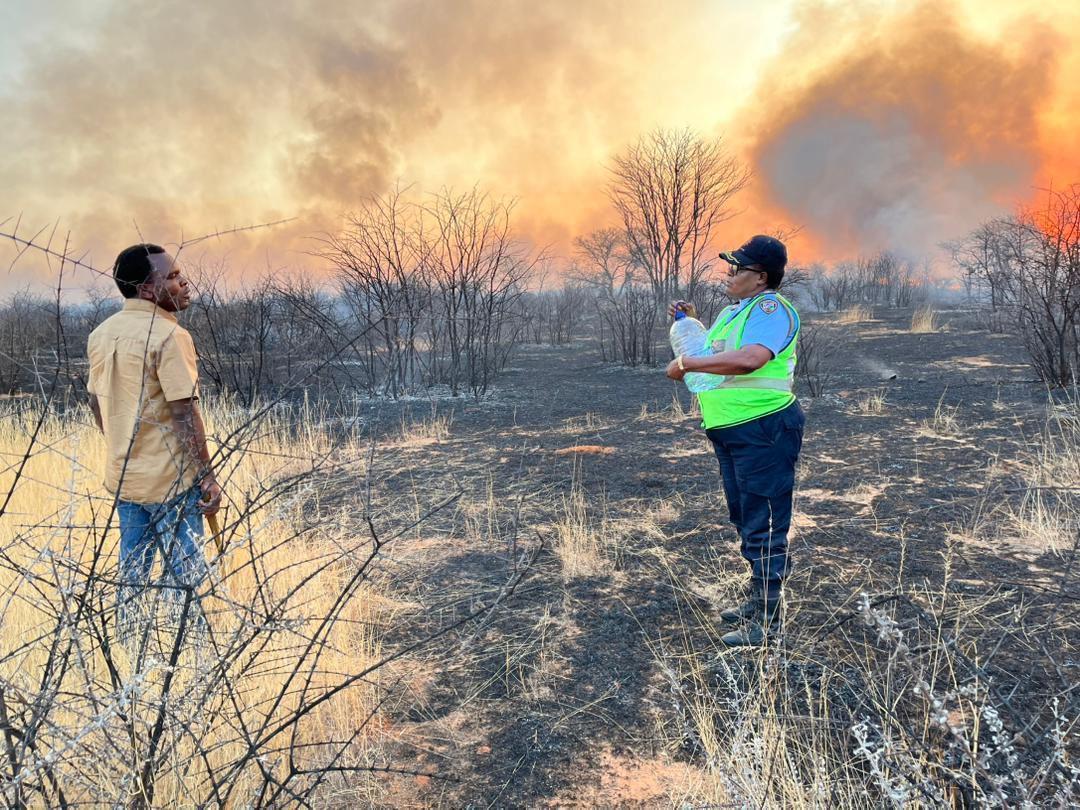Africa-Press – Namibia. The Ministry of Environment, Forestry and Tourism is still assessing the full financial requirement of the recent devastating veld fires in the Etosha National Park based on the damage recorded.
Due to this ongoing assessment the ministry is not yet able to stipulate the exact investment necessary to repair vital infrastructure and related improvements to the national park as required by the fires that decimated the park in September.
Covering more than 22 900 square kilometres, Etosha is one of the largest national parks in Africa. It is estimated that some 200 000 tourists visit the nature reserve every year. When the recent veld fires became uncontrollable, Namibia sent helicopters and hundreds of soldiers to help.
In response to New Era queries, environment ministry spokesperson, Ndeshipanda Hamunyela, stated that upcoming investments in Etosha will focus on replacement of compromised waterhole pipes, ongoing repairs to fencing infrastructure, and strengthening future fire-management equipment and cutline grading capacity.
“Because structures like camps and lodges were not affected, the required investment is expected to be relatively low and focused mainly on water infrastructure and fencing, rather than large-scale rebuilding,” Hamunyela stated.
She elaborated that infrastructure damage due to the recent fires was minimal. This was in part thanks to quick response times and hard work from staff and volunteers.
Thanks to the early clearing around priority sites, only a few items were affected. These include the Khurus Waterhole where wiring was burnt but repaired immediately; Okawao Camp, where a section of perimeter fence was burnt; fence droppers that were burnt near Farm Pioneer; and several waterhole pipelines that require replacement due to heat-related cracking and loss of structural integrity.
Hamunyela noted that no major buildings, accommodation facilities, or internal road networks were destroyed.
In terms of animals affected, 28 were lost but will not be replaced and therefore no financial cost is associated.
“The ministry will not be relocating or replacing wildlife in Etosha, we will allow natural recovery. Therefore, no financial cost is attached to returning or replacing animals lost in the fire,” Hamunyela explained.
The animals lost include elephants, springbok, duikers, two giraffes, a rhino calf, a zebra, and a hyena.
Remarkably, the damaging fires did not several damage any roads. “Roads remained usable, and tourists were simply advised to avoid certain routes near active fire zones for safety. All road closures were precautionary, not due to physical damage,” Hamunyela explained.
She added that the ministry has already embarked on a major road upgrade project of tourist roads to low-volume seal. The upgrades will start from Okaukuejo to King Nehale Entrance Gate, including Halali detours via Namutoni, covering a total distance of 214km.
“The appointed contractor has achieved 100% completion of site establishment at Okaukuejo, while site establishment at Halali has reached approximately 80%. The deviation works for the first 20km stretch from Okaukuejo to Ondogab Junction have been fully completed. So far, 21.6km of roadbed, 16.8km of mass earthworks, and 9.24km of subbase have been completed. The base layer, which precedes the final surfacing asphalt (blacktop), is expected to commence shortly”, Hamunyela stated.
For More News And Analysis About Namibia Follow Africa-Press






